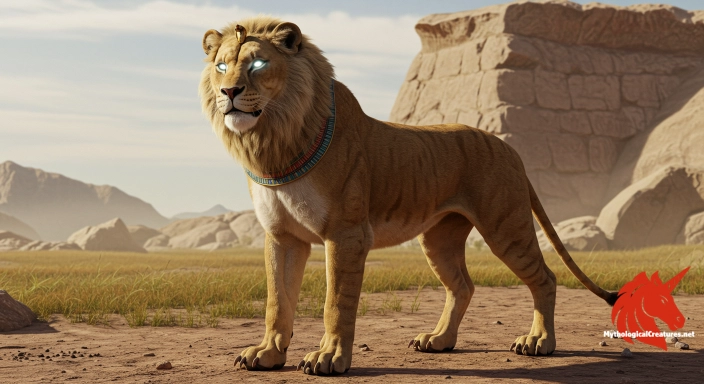Ato-sees: Ato-sees, also known as Ask-wee-da-eed, is a Native American mythological figure from the Algonquian Abenaki tradition.

Ato-sees
Ato-sees - Ato-sees embodies the darker aspects of shamanistic power and serves as a cautionary figure within Abenaki mythology.
Origins & First Encounters
Ato-sees is an enigmatic figure whose origins are deeply intertwined with the spiritual traditions of the Algonquian Abenaki people. His legend is fundamentally anchored in oral storytelling, where he emerges as a mystical shaman with a hybrid form that fuses human intelligence with the primal aspects of a snake. Born from a cultural milieu that revered both nature and the supernatural, his tale was transmitted in intimate community gatherings by elders and storytellers. His early attestation is shrouded in the mystery of ritual and myth, reflecting a community’s efforts to explain the unexplainable. In these narratives, Ato-sees is portrayed as a complex character whose dual nature symbolises the interplay between wisdom and danger. His uncanny ability to force humans into frantic searches for ritual components added layers of both awe and terror to his myth. The synthesis of shamanic power and serpentine qualities rendered him a figure of reverence, as well as a dire cautionary presence. His story, pulsating with themes of transformation and retribution, continues to captivate the collective imagination and serves as a profound reminder of the dynamic relationship between humanity and the natural world.
Source Texts & Tale Variants
The narrative of Ato-sees has been preserved primarily through the rich and fluid oral traditions of the Algonquian Abenaki people. Early accounts of his exploits were interwoven with ceremonial recitations and storytelling sessions, allowing his myth to adapt and evolve over time. Ethnographers and early folklorists later sought to capture these oral histories, transcribing variations that had been handed down through generations. Diverse versions of his story exist, with some emphasising his role as a benevolent shaman and others highlighting his darker temper and predatory demands. In several renditions, he coerces individuals into an almost fated pursuit of materials for his mysterious cooking rites, a detail that marks a recurring motif in his myth. A notable variant recounts his eventual demise at the hands of Moosbas, a figure who symbolically reasserted the balance between human order and supernatural chaos. These variant stories not only underscore his complex nature but also reflect the multiplicity of voices within indigenous narratives. The enduring adaptability of his myth ensures that every retelling contributes a new layer of meaning, allowing the legend of Ato-sees to remain vibrant and resonant through time. As such, his story stands as a classic example of the living and dynamic quality of Native American folklore.
Form & Powers
Artistic and oral depictions of Ato-sees present him as a striking blend between the human and the serpentine. His upper body retains the distinctly human features symbolic of intellect and shamanistic prowess, often illustrated with a keen gaze and a façade marked by ritualistic scars or tattoos. In dramatic contrast, his lower form transforms into that of a snake, complete with overlapping scales that shimmer with an eerie, natural luminescence. This dual anatomy creates a captivating visual metaphor, merging the rational with the instinctual. The transition from human flesh to reptilian scales is depicted as both seamless and otherworldly, suggesting that his very existence defies ordinary biological constraints. Some descriptions focus on his eyes, which are said to glow with a mysterious, almost hypnotic luminescence, reflecting his profound connection to the spirit world. Varying accounts also portray him with a long, undulating tail and a forked tongue, each detail enriching the narrative of power and enigma. Regalia made from feathers, bones, and natural elements further augments his appearance, symbolically linking him with the forces of nature. This elaborate and multifaceted portrayal emphasises the inherent tension between beauty and menace, and encapsulates the mystique that has defined his legend for generations.
Regional Faces
The myth of Ato-sees exhibits a fascinating array of regional variations, each reflecting the unique cultural and environmental contexts of different Algonquian communities. In some regions, he is revered more as a benevolent shaman with healing abilities, while in other localities the focus shifts to his darker, more ominous character. Artistic renditions differ from one area to another; some tribal depictions accentuate his serpentine features, whereas others enhance the human aspects to underline his role as a spiritual guide. Variations in the narrative also occur, with certain communities emphasising his cunning coercion of humans to procure ritual materials, while others focus on his ultimate downfall at the hands of Moosbas. These adaptations illustrate how the myth absorbed local beliefs, natural landmarks, and community values over time. In areas where the snake symbol holds particular sacred significance, Ato-sees is sometimes seen as a mediator between the physical and the spirit worlds. Local storytellers have also interwoven elements of seasonal change and natural cycles into his lore, thereby linking his existence directly to the rhythms of the natural environment. This regional diversity not only enriches his character but also demonstrates the dynamic process by which oral traditions evolve to reflect the collective psyche of diverse communities. Through these varied lenses, his myth remains a living and adaptable narrative across the cultural landscape.
Cultural Parallels
In the broader context of world mythology, Ato-sees resonates with numerous figures whose identities bridge the human and the animal. His dual nature, combining man with a serpent, finds compelling parallels in the revered Nāgas of South Asian lore, where serpentine beings often embody both wisdom and the latent power of nature. Comparable figures appear in various traditions, including European legends where snakes are simultaneously a symbol of healing and a harbinger of caution. The figure of Ato-sees also draws thematic connections with other shamanic archetypes, whose transformative abilities echo the ancient human preoccupation with the liminal space between mortality and the divine. His myth, like those of many hybrid creatures, explores the tension between civilized order and the untamed forces of nature—a motif observed in global folklore. Such comparative analysis reveals that Ato-sees is part of a universal narrative tradition, where the interplay of human and animal qualities encapsulates the ambivalence of power. The confluence of benevolence and menace in his character is a theme shared across cultures, illustrating a shared human fascination with duality. In this way, his legend not only affirms indigenous wisdom but also contributes to a larger discussion on the symbolism of transformation and otherness. The cross-cultural echoes found in his tale reinforce a sense of universal myth-making, where disparate traditions converge upon common existential themes.
Legacy & Modern Evolution
The evolution of Ato-sees’s myth over time reflects a journey from the ephemeral nature of oral tradition to enduring modern reinterpretations. Originally rooted in communal storytelling and ritual practice, his narrative has gradually infiltrated contemporary art, literature, and cultural dialogues. Early portrayals, laden with cautionary overtones, warned against transgressions against nature and the sacred order of life. Over the centuries, his image has been reshaped to symbolise the complex interplay of creation and destruction, allowing modern audiences to reassess the inherently dual aspects of power and vulnerability. Contemporary renditions often highlight his role as a mediator between the spiritual and natural realms, with reinterpretations that resonate with modern concerns about identity and transformation. Art installations, exhibitions, and digital media projects frequently incorporate his myth as a bridge between ancestral wisdom and present-day ecological and social commentary. The motif of a hybrid, transformative figure continues to inspire creative expressions and scholarly interest alike. His persistent presence in cultural narratives underscores the timeless appeal of mythology in exploring the human condition. Ultimately, Ato-sees endures as a symbol of the mutable and profound nature of myth, a reminder that ancient voices continue to influence modern thought and artistic endeavour.
Interesting Fact
An intriguing aspect of Ato-sees is how his hybrid nature not only symbolizes the literal blend of human and snake but also metaphorically represents the clash between orderly civilization and the chaotic forces of nature.
Quick Creature Info
Origin:
Features:
Our Mythic Legendary Rating:

Also Sometimes Known As:
Habitat:
Supernatural Powers:
Physical Attributes:
Abilities:
Behavior:
Weaknesses:
Lore:
Related Creatures, Tales or Lore
- HHorned Serpent
- QQuetzalcoatl
- NNaga
References
Discover Another Mythical Legend You May Not Have Heard Of?
Uncover the mysteries of ancient folklore and expand your knowledge of legendary beings from cultures around the world.
Dare to Meet the Shesmetet....
Curated by the Mythological Creatures Team (rev. May 2025)
